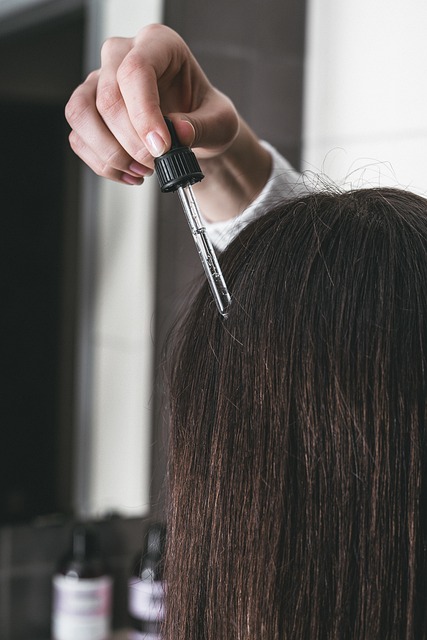Hair Thickening Shampoo: What It Does and How It Works
Hair thickening shampoos are formulated to change the appearance and feel of hair by coating strands, altering texture, or supporting scalp conditions that can make hair look fuller. They do not offer a guaranteed cure for thinning, but they can be a useful part of a routine for people wanting more volume or improved hair health. Ingredients and formulation matter: some act on the strand surface, while others aim to support scalp condition or follicle health.

This article is for informational purposes only and should not be considered medical advice. Please consult a qualified healthcare professional for personalized guidance and treatment.
What is a hair thickening shampoo?
A hair thickening shampoo is typically a cleansing product designed to increase the look of volume and body. Unlike standard shampoos that focus primarily on cleaning, thickening shampoos often include polymers, film-forming agents, and conditioners that swell or coat the hair shaft to create a fuller appearance. They may also avoid heavy conditioning agents that weigh hair down.
Many formulations are aimed at improving the visual density of hair rather than increasing the number of hair follicles. Results are usually cosmetic and temporary — meaning strands look thicker while the product is present or for a limited time after use. For long-term hair health, complementary scalp care and, when appropriate, clinical treatments may be needed.
How do shampoo ingredients support hair thickening?
Common ingredients in thickening shampoos include panthenol (provitamin B5), hydrolyzed proteins (keratin, wheat, soy), and lightweight polymers that add film and texture. Panthenol can bind to the hair surface and improve tensile strength, while hydrolyzed proteins can temporarily fill gaps in the cuticle and increase strand diameter. Polymers and volumizing agents increase friction between strands to reduce limpness and give a fuller look.
Some products include botanical extracts, caffeine, niacinamide, or peptides that are intended to support scalp health or circulation. Scientific evidence for topical hair-growth effects varies: many ingredients improve the hair’s surface properties or scalp condition, whereas clinically proven hair regrowth agents are limited and usually require medical-grade treatment.
Can hair thickening shampoo affect hair growth or hair loss?
Shampoos can influence hair loss indirectly by improving scalp health and reducing breakage. For example, a gentle formula that minimizes irritation and removes excess oil or product buildup may help maintain an environment where hair is less prone to breakage. However, shampoos alone are unlikely to reverse pattern hair loss or severe shedding caused by medical conditions.
When hair loss or notable thinning occurs, it’s important to consider potential causes such as genetics, hormonal changes, nutritional deficiencies, stress, medication, or scalp conditions. Some therapeutic agents for hair loss (like topical minoxidil) have clinical evidence for promoting hair growth; these are distinct from cosmetic thickening shampoos. Consult a healthcare professional for persistent or accelerating hair loss.
How to choose a shampoo for hair thickening in your area
Choosing the right product depends on hair type (fine, coarse, curly, color-treated), scalp sensitivity, and goals. Look for lightweight formulas if your hair is fine; seek sulfate-free or low-sulfate options if color preservation or reduced irritation is important. Read ingredient lists for film-formers, panthenol, and proteins, and avoid heavy silicones if you find they weigh hair down.
If you have scalp issues such as dandruff, seborrheic dermatitis, or persistent irritation, consider shampoos formulated for those conditions or consult local services like a dermatologist or trichologist in your area. Trial and error is common: try a product for several washes (often 4–8 weeks) to judge effects, and consider alternating with a clarifying shampoo to prevent buildup.
Typical results and how to use thickening shampoo for best effect
Expect cosmetic, short-term improvements in fullness and texture rather than permanent increases in hair count. For best results, apply shampoo to wet hair and gently massage the scalp to cleanse without rough rubbing; leave any active ingredients in contact for the manufacturer-recommended time if specified. Pair with compatible conditioners or lightweight styling products formulated for volume to avoid weighing hair down.
Consistency matters: many users report gradual, visible improvements in manageability and perceived density after several weeks of regular use. If the aim is to address underlying hair loss, discuss additional options with a healthcare provider, such as topical or oral treatments supported by clinical evidence. Avoid frequent, aggressive washing or treatments that strip oils, as excessive damage can increase breakage.
Conclusion
Hair thickening shampoos can be a practical cosmetic tool to increase the appearance of fullness and improve hair texture when chosen and used appropriately. They work mainly by coating strands, adding lightweight volume, and supporting scalp cleanliness. For persistent or significant hair loss, or when you need medical-grade interventions, consult a qualified healthcare professional to evaluate causes and treatment options.






